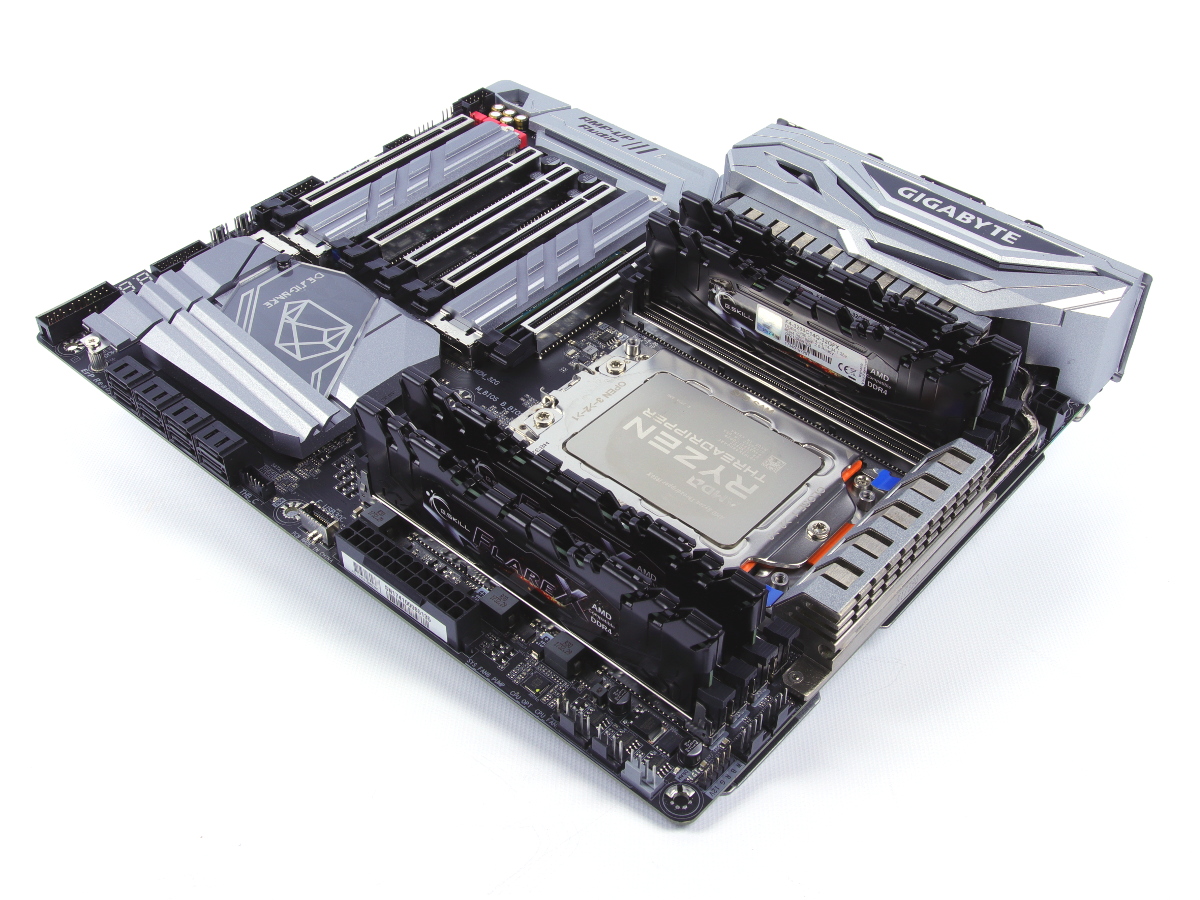Tom's Hardware Verdict
It's most beautiful board we’ve tested yet, with excellent performance. But the X399 Designare-EX's Overclocking results and price both give us pause.
Pros
- +
Excellent out-of-the-box performance
- +
Top-tier aesthetics
- +
Good efficiency
Cons
- -
Poor value given current price
- -
Disappointing overclock results on our sample
- -
UEFI GUI doesn't match board design
Why you can trust Tom's Hardware
Features & Layout
We'll just come right out and say it: The Gigabyte X399 Designare EX is the most beautiful board we’ve tested from the AMD camp thus far. It's also a top performer in our charts, but comes with a price tag to match--it's currently selling for between $370 and $400. Builders focused on value should obviously look elsewhere (though no Threadripper boards come cheap). But builds that require top-tier performance and stand-out aesthetics will find the Designare appealing.
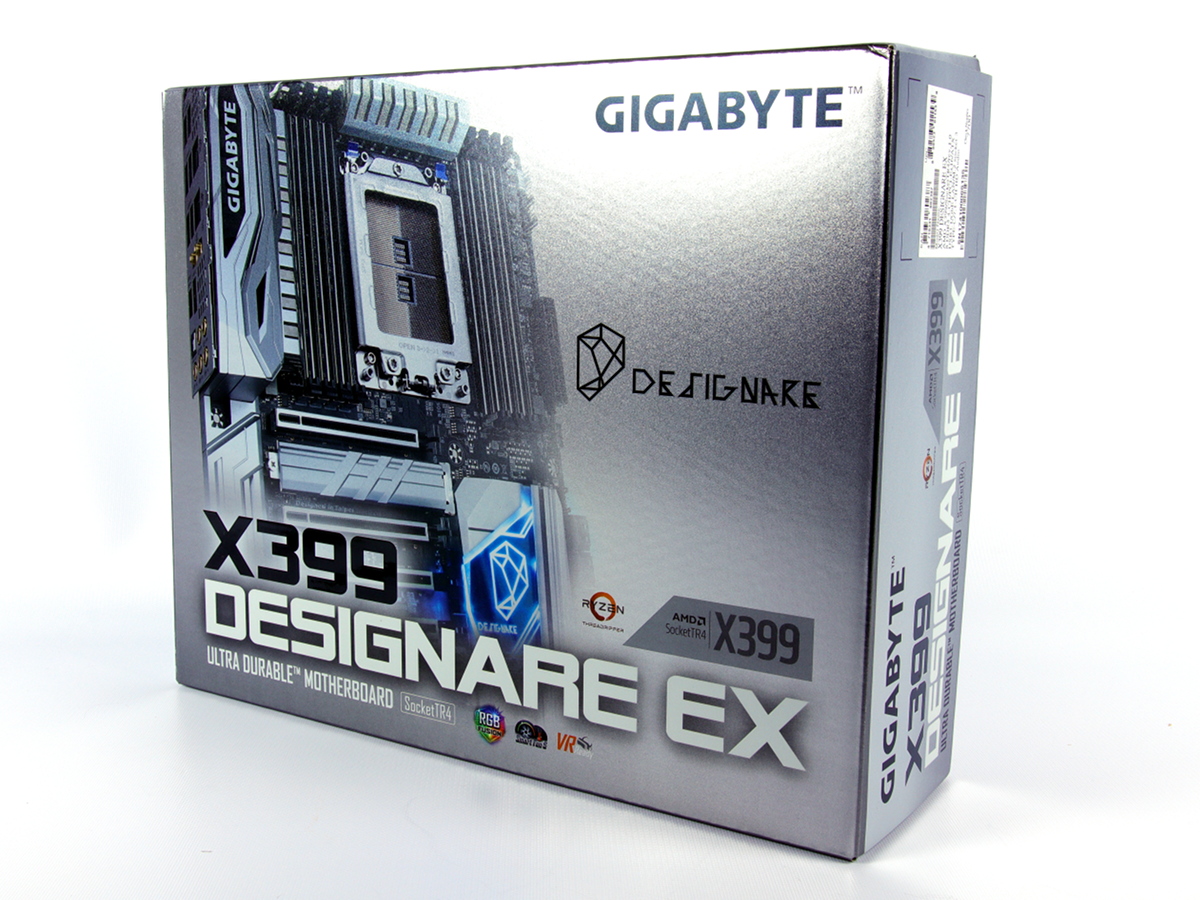

We really liked the Gigabyte X399 Aorus Gaming 7, so when Gigabyte initially posted beauty shots of the Designare variant on Instagram, our jaws dropped. Instantly, we were envisioning how well it would look in our Corsair Crystal 570X lit up for the world to see. But, we've been burned before when judging a product solely by press shots. So we'll proceed with cautious optimism.
Specifications
| Socket | TR4 |
| Chipset | AMD X399 |
| Form Factor | ATX |
| Voltage Regulator | 8+3 Phases |
| Video Ports | ✗ |
| USB Ports | 10Gbps:(1) Type A, (1) Type C5Gb/s: (8) Type A |
| Network Jacks | (2) Gigabit Ethernet |
| Audio Jacks | (5) Analog, (1) Digital |
| Legacy Ports/Jacks | (1) PS/2 |
| Other Ports/Jack | (2) MMCX WiFi Antenna |
| PCIe x16 | (4) v3.0 (x16/x8/x16/x8)(1) v2.0 (x4) |
| PCIe x8 | ✗ |
| PCIe x4 | ✗ |
| PCIe x1 | ✗ |
| CrossFire/SLI | 4x / 4x |
| DIMM slots | (8) DDR4 |
| M.2 slots | (2) PCIe v3 x4 / SATA3 60/80/110mm(1) PCIe v3 x4 / SATA3 42/60/80mm |
| U.2 Ports | M.2 Adapter |
| SATA Ports | (8) 6Gb/s |
| USB Headers | (1) 5 Gbps Type-A(1) 5 Gbps Type-C(2) USB2.0 |
| Fan Headers | (8) 4-Pin [1 is dedicated to Vreg fan] |
| Legacy Interfaces | ✗ |
| Other Interfaces | (3) RGB-LED, (2) Temp Sensor, TPM, Clear CMOS |
| Diagnostics Panel | Numeric |
| Internal Button/Switch | CMOS Clear, Power, Reset |
| SATA Controllers | Integrated (0/1/10) |
| Ethernet Controllers | (2) Intel® I211AT |
| Wi-Fi / Bluetooth | Intel Dual Band Wireless-AC 8265 cardBluetooth 4.2 / 3.0 |
| USB Controllers | ✗ |
| HD Audio Codec | ALC1220 |
| DDL/DTS Connect | ✗ / ✗ |
| Warranty | 3 Years |
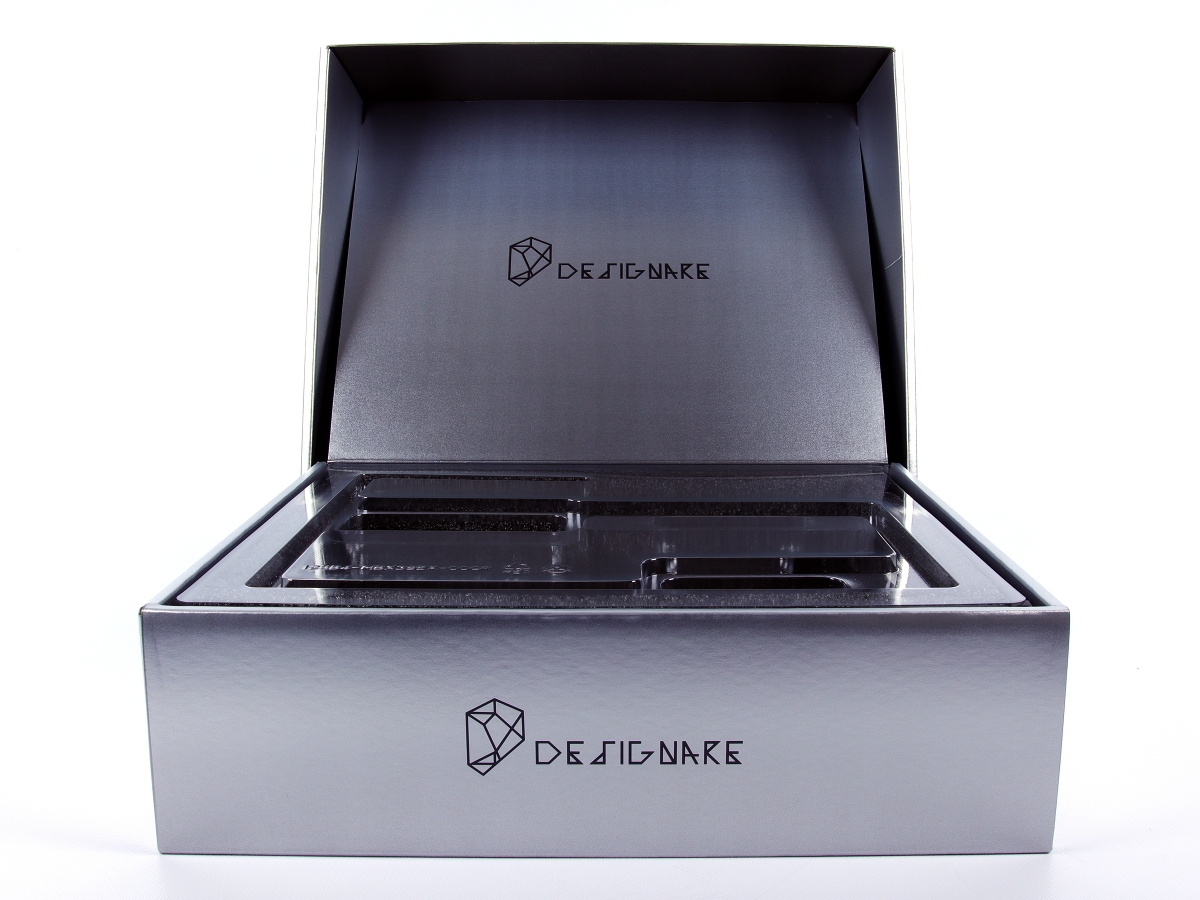
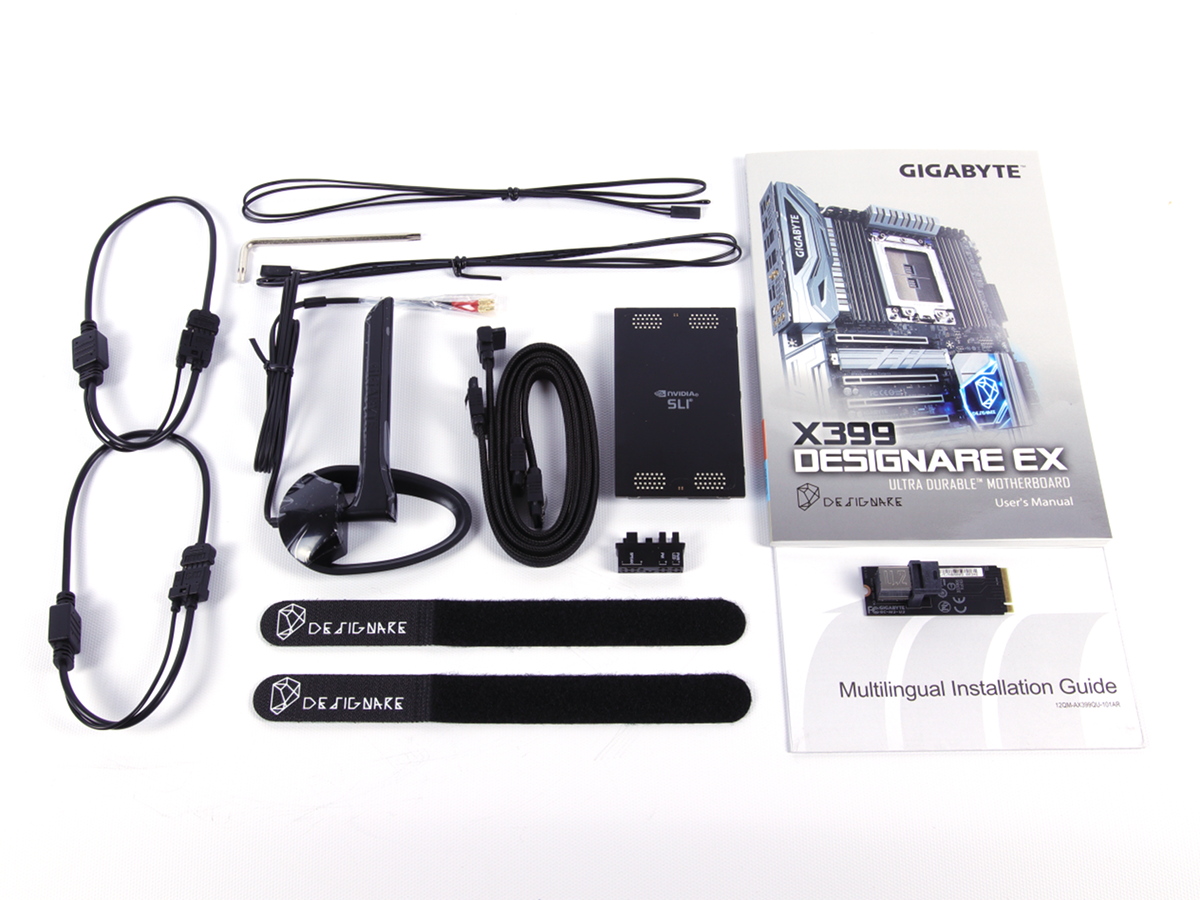
The Gigabyte X399 Designare EX shares the same design thinking as some of its Intel-based counterparts, which is a pleasant departure from the Aorus brand’s emphasis on LEDs and angled, feathery icons. Favoring elegant, sleek lines and a blue-grey color palette help elevate these boards from workhorses to works of art. Comparing against the Intel X299 variant, we see similar IO shielding, M.2 heatsinks, and regulator and south bridge heatsink designs.
But for the AMD variant, the full Threadripper assortment of connectivity is provided, and every inch of planar real estate is utilized for components. Heading to the backpanel, USB headers consume the majority of the integrated backplate. You'll find eight USB 3.0 and two USB3.1 Gen2 connectors (one Type-A and one Type-B). Network connectivity is provided with the Designare through the smaller MMCX antenna connections and dual RJ-45 connectors, enabling 802.11 a/b/g/n/ac and dual Gigabit connections respectively. As for audio, five gold-plated analog ports and an optical S/PDIF connector are available to the Realtek ALC1220 codec. And just in case your trackball hails from the 90’s, a single PS/2 port is available for interrupt-driven IO devices.
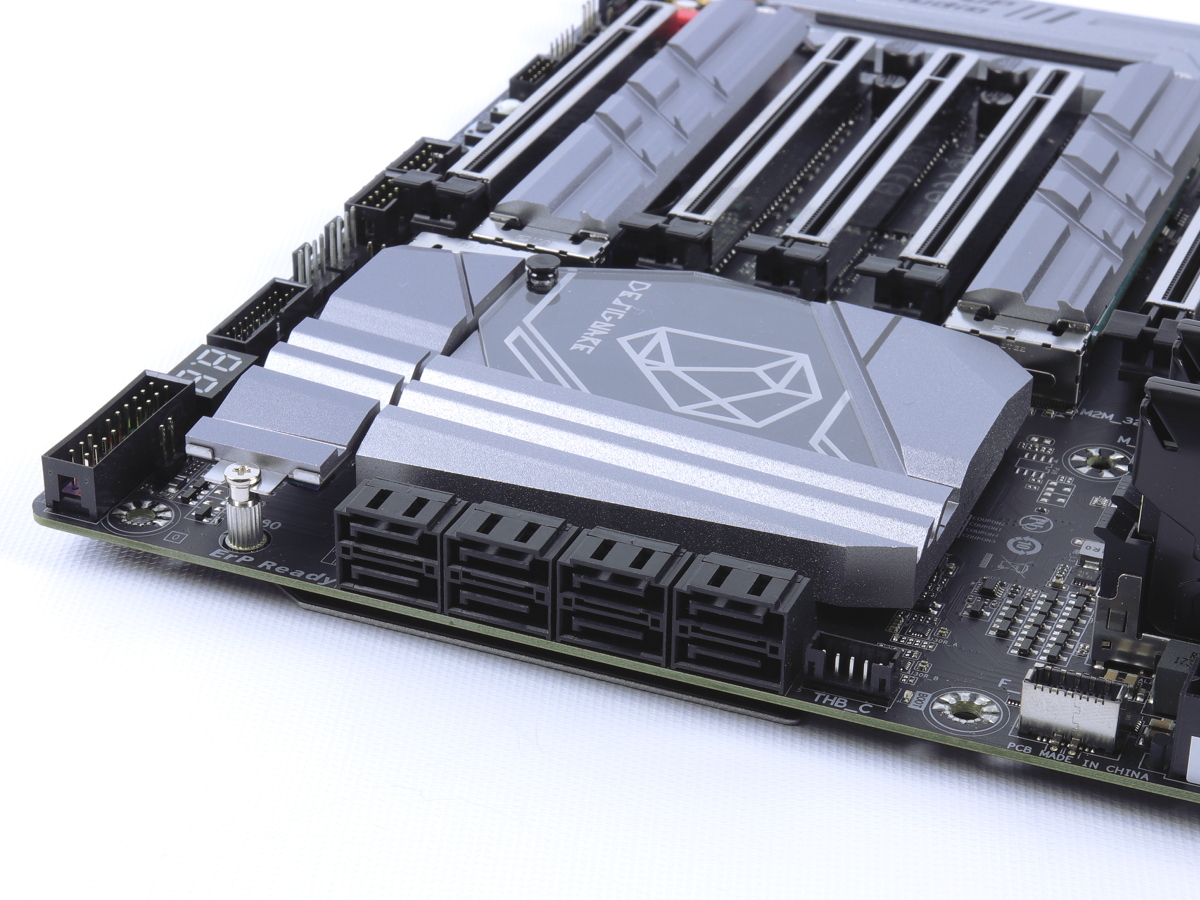
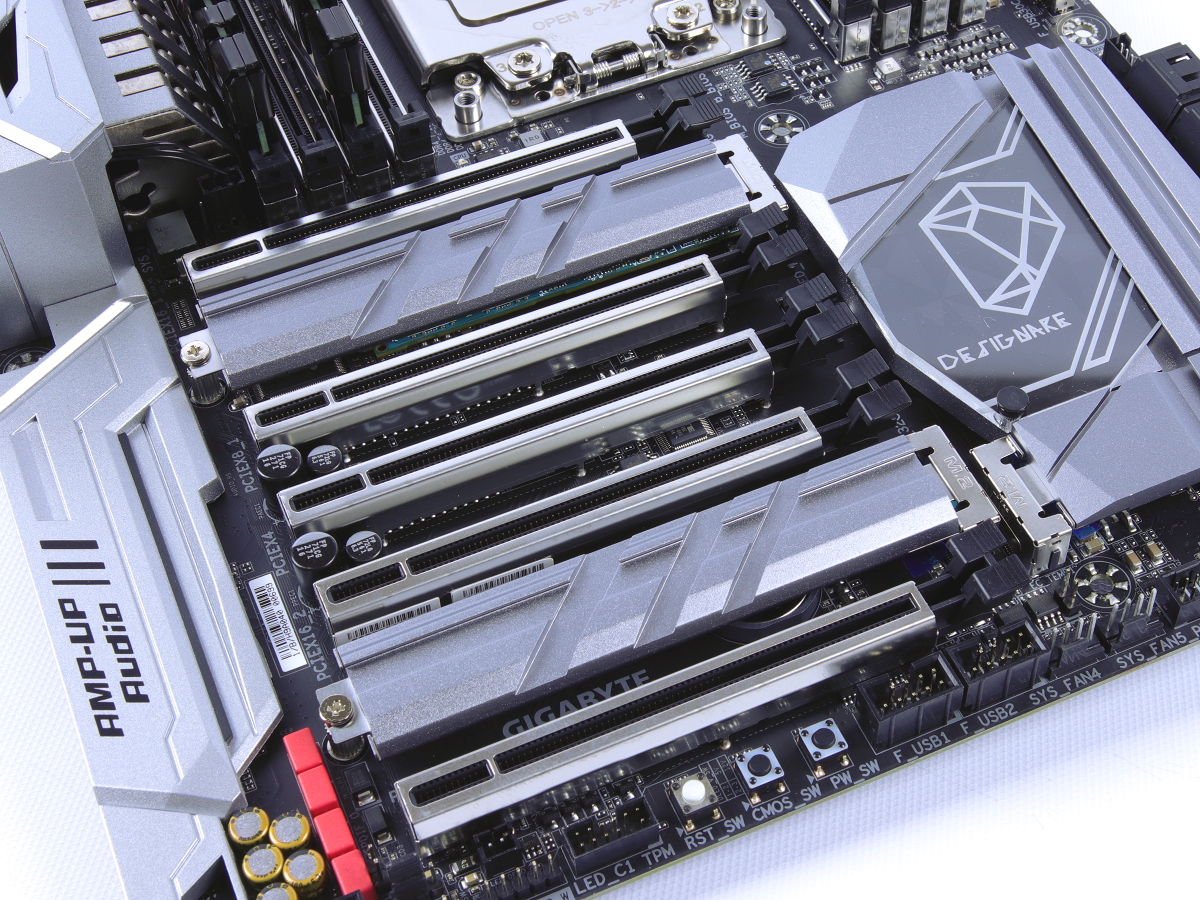
Storage and PCIE are strong points for Threadripper, and the Designare provides eight angled SATA3 headers, three PCIe Gen3 x4 NVMe M.2 slots, and five PCIe x16 connectors wired out for x16/x8/Gen2 x4/x16/x8. Fortunately, the silkscreen on the board provides clarification of each of these connectors. Our recommended loadout for these slots would be primary GPU in the first slot, followed by a blank x8 slot, a video capture card in the x4, and a 10Gb network card in the bottom x16 slot.


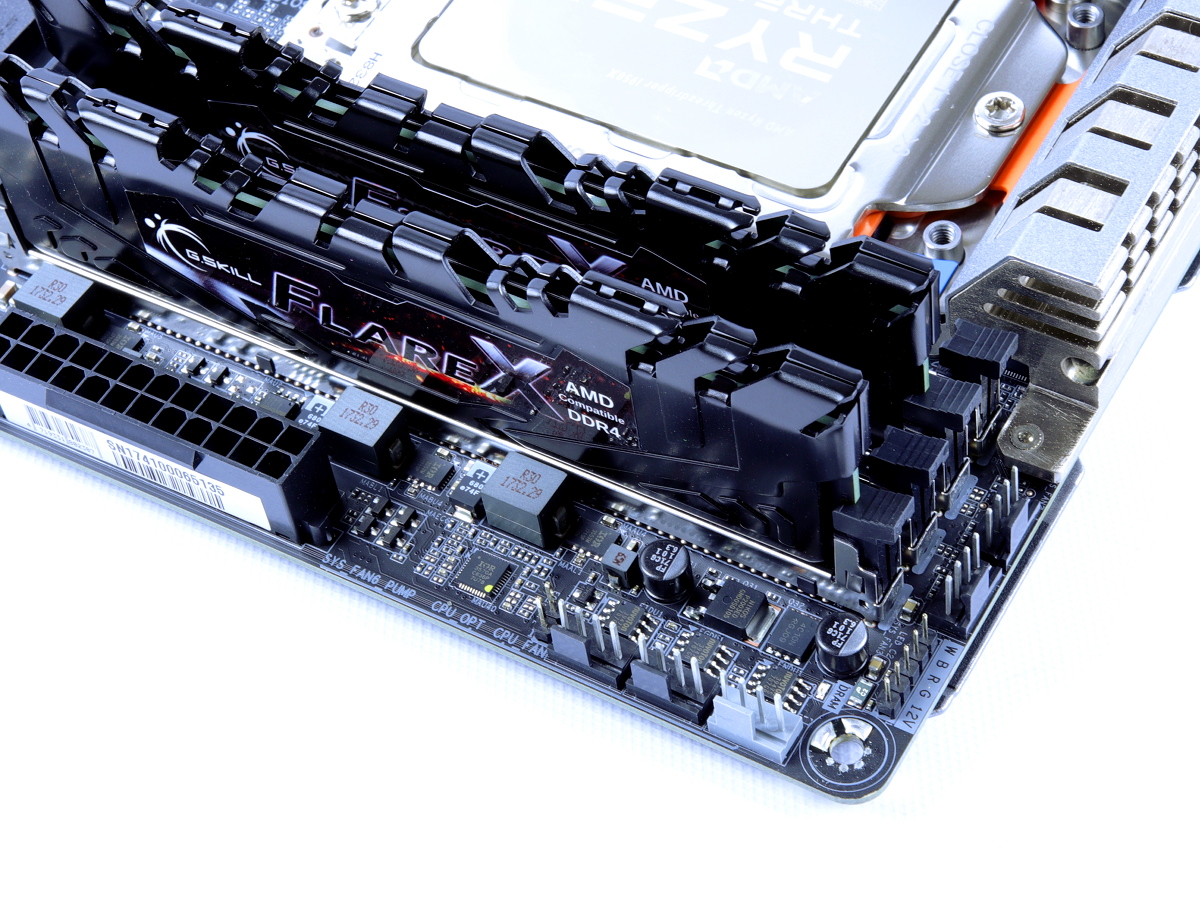
As expected, the bottom edge of the board contains the bulk of the headers for the system, featuring RGB connections, power/CMOS/reset buttons, debug LED, and various USB headers, with details available in the test configuration section of this review. Ample fan connections are provided on this board, with two located on the bottom edge and five on the top right. The eighth advertised system fan header is wired by default to the backpanel I/O fan, which makes the eight-header claim suspect at best. An additional RGB header is located at the top-right of the board and a USB3.1 Gen2 front-panel header is accessible directly below the 24-pin ATX connector.
We haven’t talked about the memory configurations on any of our previous X399 articles, so now is a good chance to cover that. The Designare EX equips the standard quad-channel DDR4 configuration on the high-end TR4 socket, but blesses us with old-school dual-hinged DIMM connectors for that audible “click-click” confirming secure seating of our expensive DIMM sticks. This board also supports both unbuffered ECC and non-ECC DIMMs, which fit our pro-sumer oriented builds well. We just wish we could find some ECC RAM that wasn’t basic PCB green?
Get Tom's Hardware's best news and in-depth reviews, straight to your inbox.



Beyond the 24-pin ATX, an 8-pin and 4-pin EPS-12V connector are located in the top-left area of the board, which is split by the heat pipe connecting both stacks of VReg heat sinks. Luckily, there are no fan headers to deal with here. But it does seem odd to have heatpipes sandwiched between very important power delivery components for the already hungry Threadripper CPU. Speaking of regulators, this board is equipped with an 8-phase VCore design, featuring PowIRstage Integrated MOSFET drivers and a PWM driver running in 8+0 mode. Remember that fan on the back IO? The heatpipes used here help transfer the heat to the larger SOC heat sink and pull air across the stack out the back of the backplate. With Threadripper 2, the additional cooling might come in handy when powering the larger 250W SKUs like the 2990WX.
Finally, let’s talk aesthetics. This Gigabyte board only boasts onboard LEDs illuminating the south bridge chip highlighting the Tron-like gem logo. For some, that might not be enough, but for a toned-down workstation build, it's just the right amount. As I’m in the process of building a Threadripper build in a Phanteks P400 with a similar board, it is a very pleasant combination.Adding in an external LED strip, the shadows generated by the southbridge and the M.2 covers are great.
So what's not to like about this board? To be frank, not much. We feel that the contents of the box are a little bit misplaced, favoring form over function. Also, the top left quadrant of the board is incredibly tight, and we would have preferred higher-quality power and reset buttons on the bottom edge of the board. The inclusion of the near full-coverage backplate seems wasted with most cases. So a little bit of creativity is needed for picking the right chassis for a build with this board.
MORE: Best Motherboards
MORE: How To Choose A Motherboard
MORE: All Motherboard Content
-
GeoffCoope It has no 10GBase-T port? so not really a board that could be used in a workstation with 4 x GPU's.Reply -
Flying-Q ReplyReally. It has ps2 ports. WHO STILL USES PS2
I have an old and very robust mechanical keyboard which I would not trade for any of your modern rubbish. It was built when PS/2 was still new and will outlive (and has already outlived) many so-called 'rugged' keyboards that my work has.

